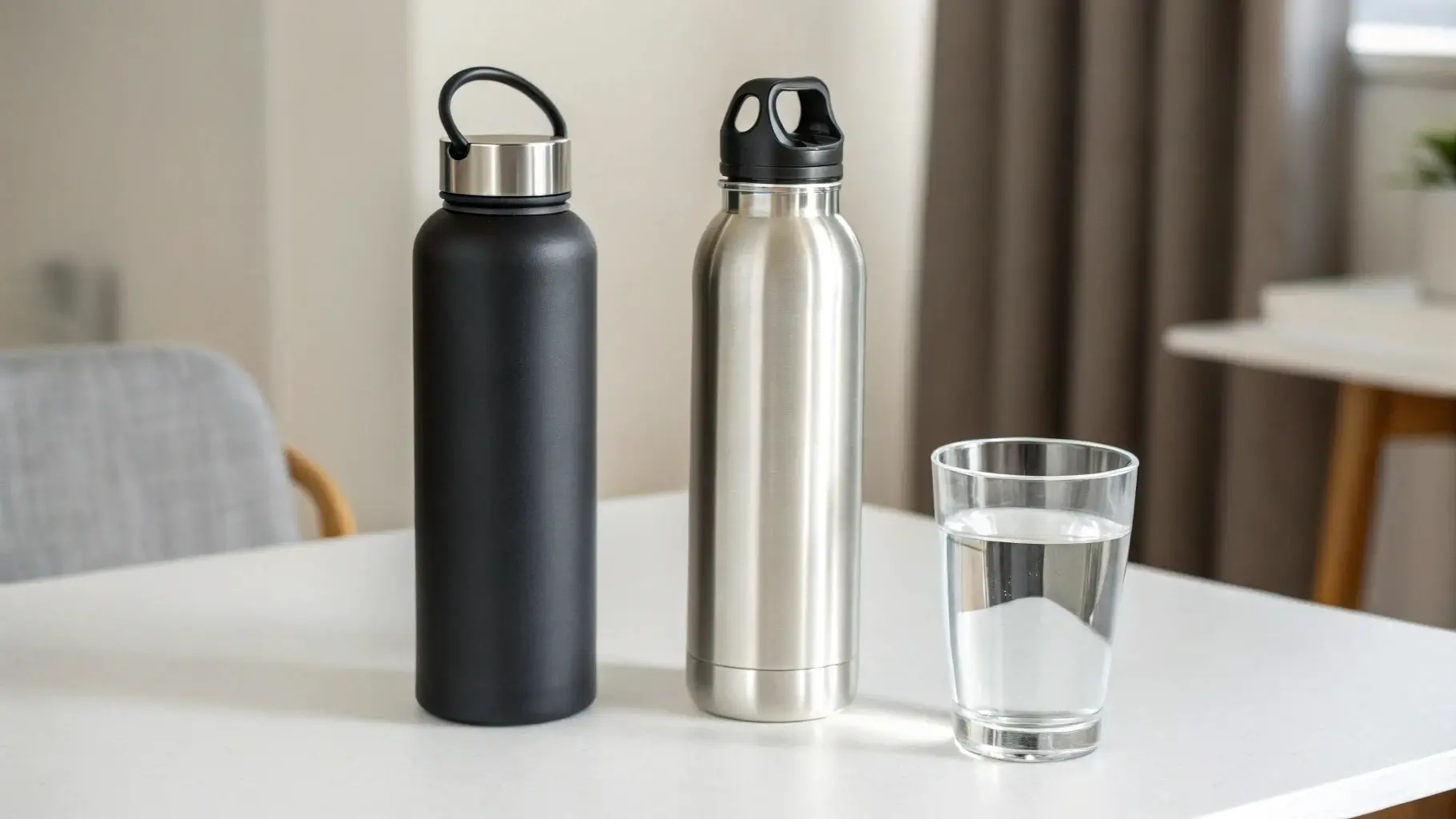
Choosing the right bottle isn’t just about style—it can affect your health, taste, and hydration experience.
Stainless steel bottles are more durable, safer, and better at keeping drinks hot or cold than aluminum bottles.
If you're deciding between these two popular options, here's everything you need to know.
What’s the Difference Between Stainless Steel and Aluminum Bottles?
Stainless steel and aluminum may look similar, but they behave very differently.
Stainless steel bottles are made from food-grade alloys like 304 (18/8) and need no internal coating. Aluminum bottles1 are lighter but require a protective lining to prevent chemical leaching.
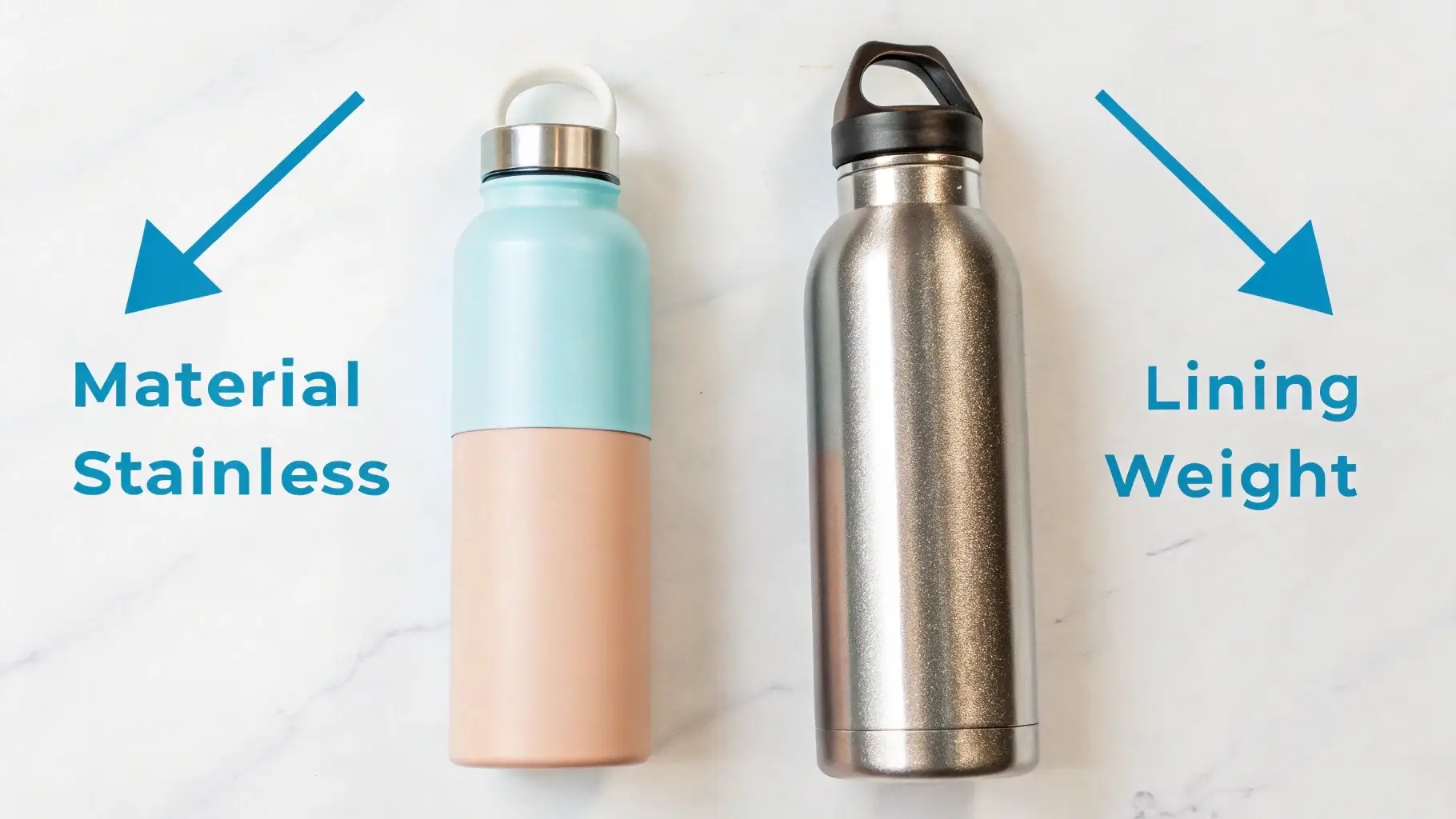
| Feature | Stainless Steel Bottles | Aluminum Bottles |
|---|---|---|
| Material Type | Non-reactive alloy | Reactive metal with liner |
| Lining Required | No | Yes |
| Typical Use Cases | Premium, daily hydration | Budget or light travel |
Is One Material Safer Than the Other for Drinking Water?
Safety is key when it comes to what you’re sipping from.
Stainless steel is the safer choice because it’s non-reactive and doesn’t need chemical linings that could degrade over time.
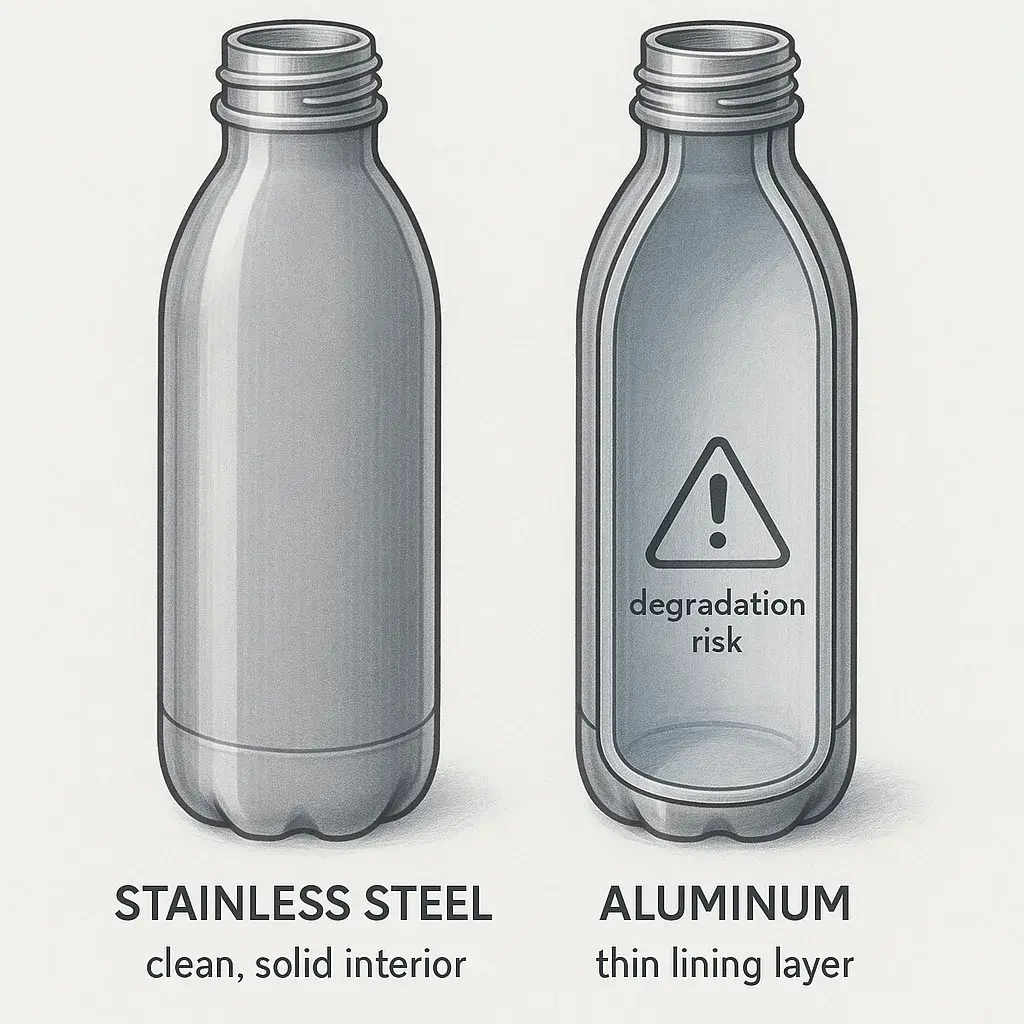
Internal linings in aluminum bottles2—resins, enamel, or epoxy—may wear off or crack, especially when used with hot liquids.
"We had aluminum bottles once. After a few months, the liner started flaking—our team switched to stainless steel after that."
Which Bottle Lasts Longer with Daily Use?
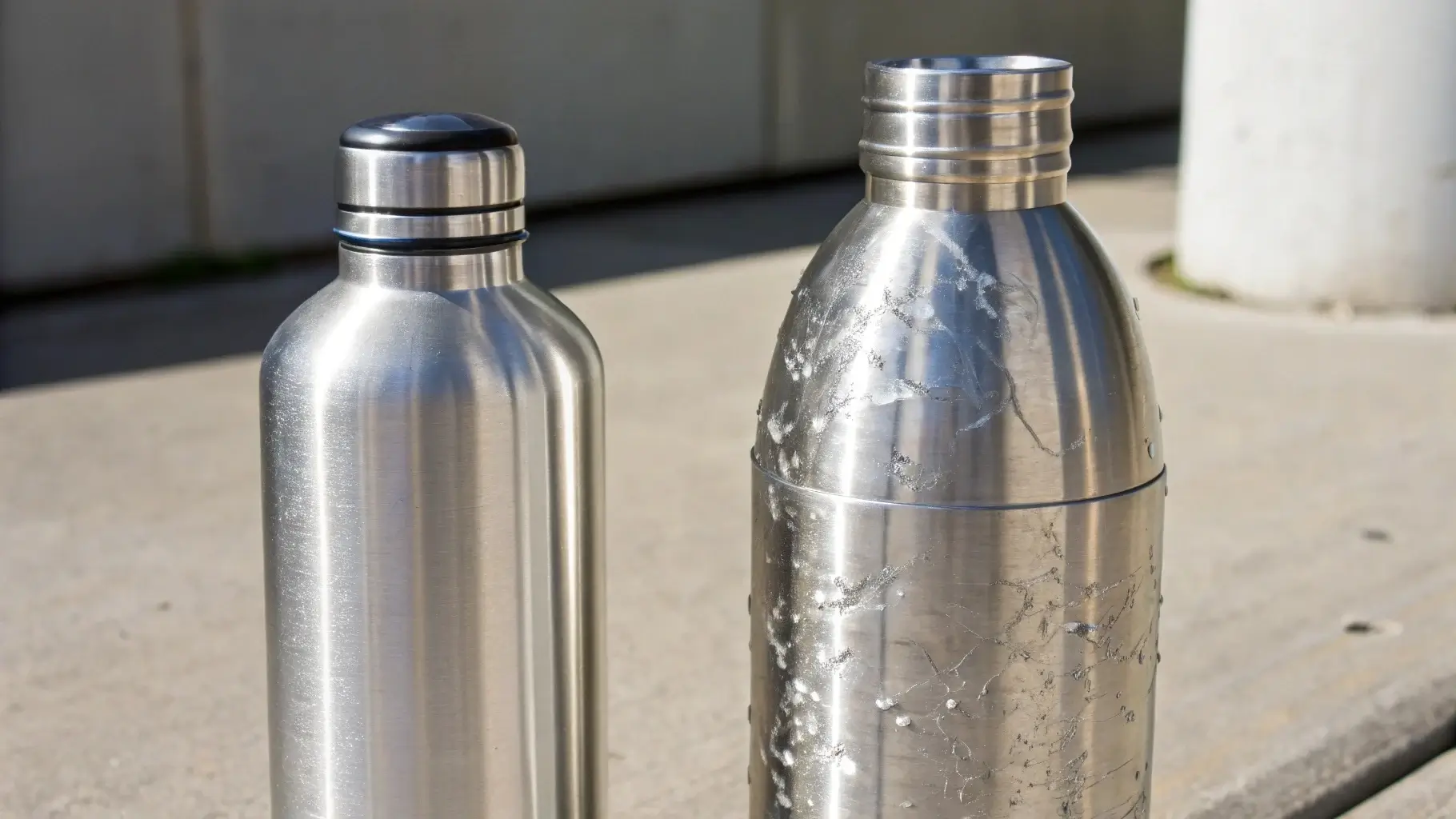
Durability can mean fewer replacements and less waste.
Stainless steel bottles are built to last. They resist dents, cracks, and corrosion better than aluminum.
Metal strength comparisons3 show stainless steel outperforms aluminum in durability under impact and wear.
Which Bottle Is Lighter to Carry Around?
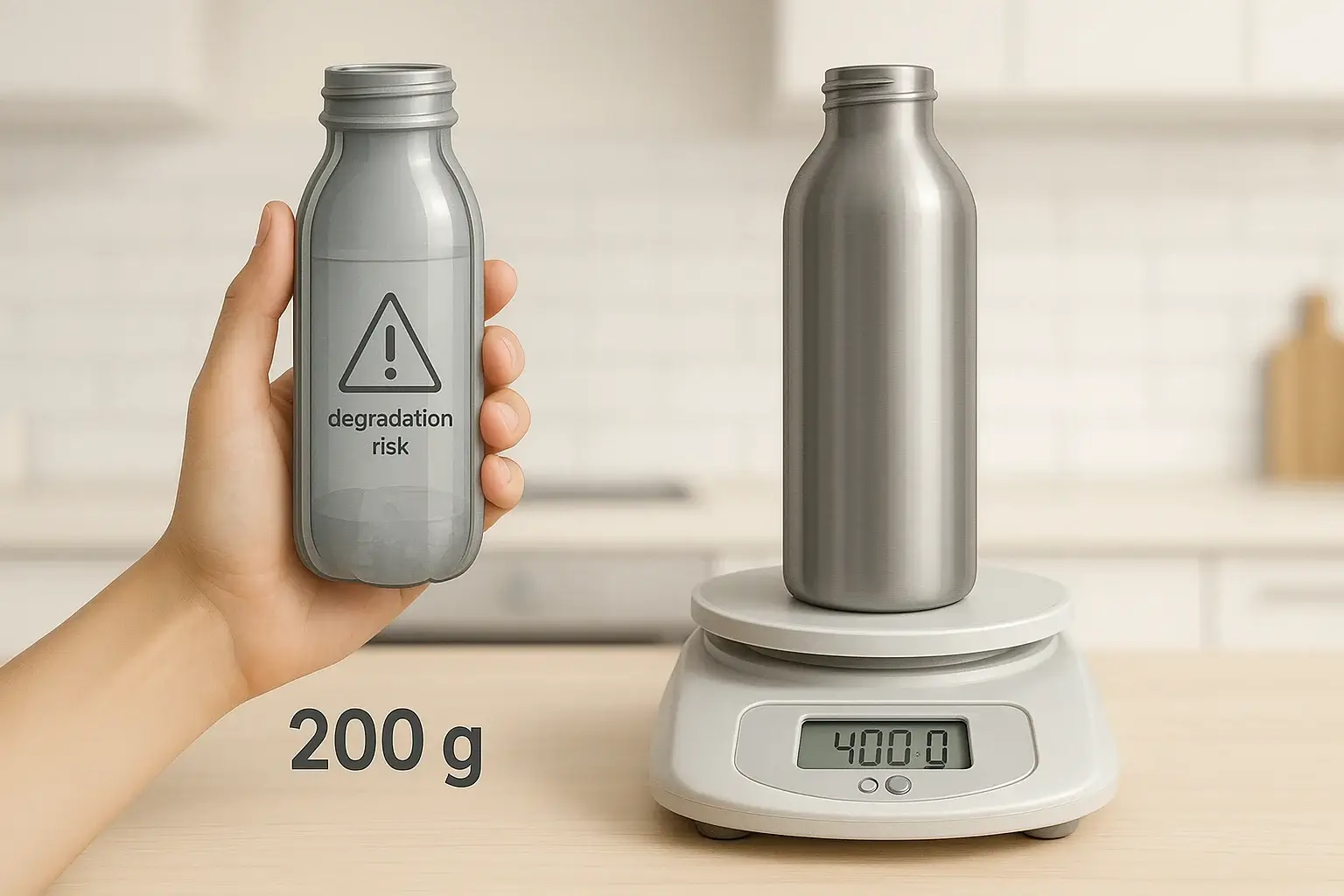
If weight is your top concern, aluminum wins.
Aluminum bottles are significantly lighter than stainless steel ones, especially if uninsulated.
This makes aluminum good for short hikes or travel when ounces matter. However, that lightness comes with trade-offs.
Which Keeps Water Cold or Hot Longer?
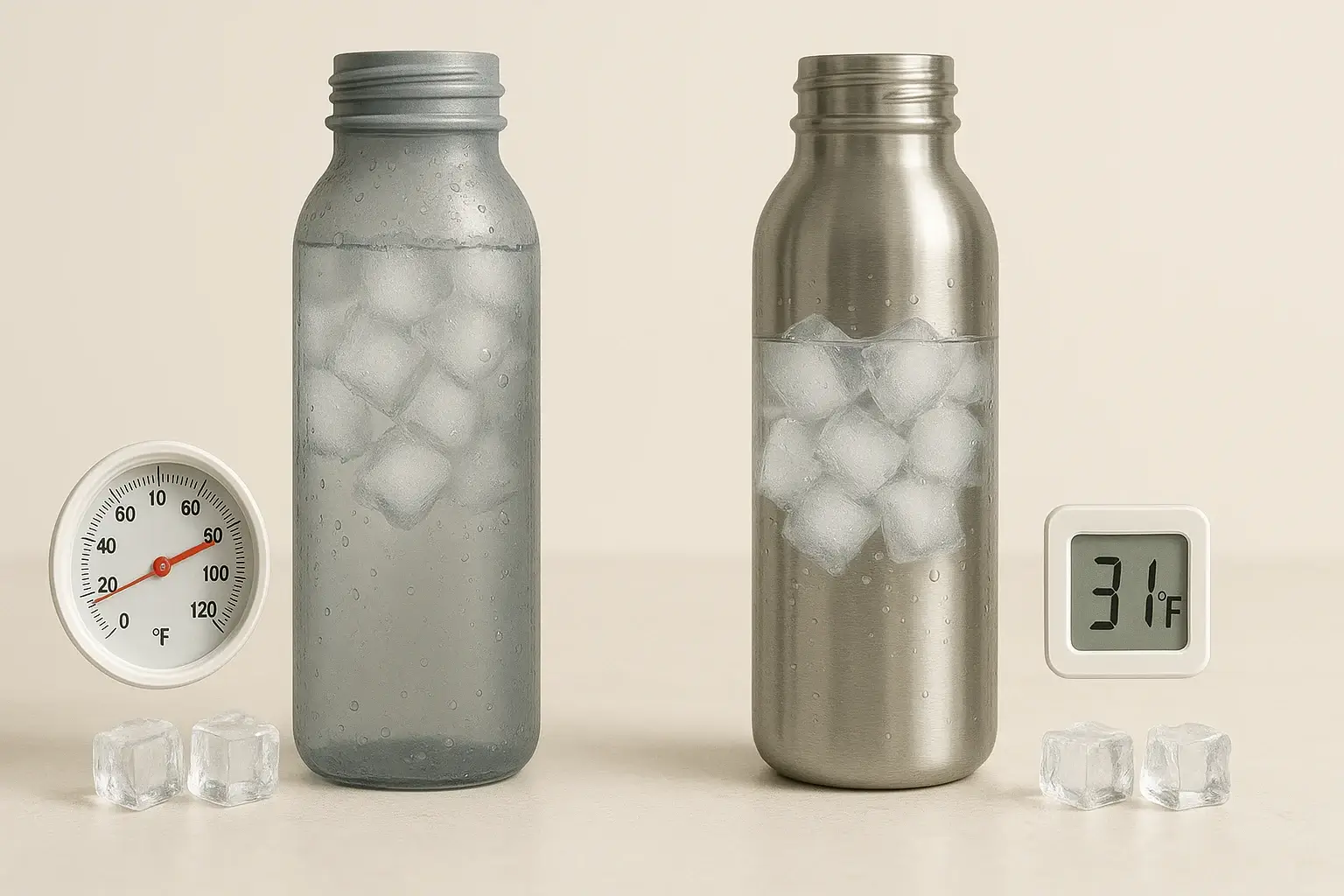
Insulation makes a big difference in performance.
Double-wall vacuum-insulated stainless steel bottles can keep water cold for 12–24 hours. Aluminum bottles typically offer no real insulation4.
If you need your drink to stay icy or steaming, stainless is the only real option.
Does the Bottle Material Affect Taste or Health?
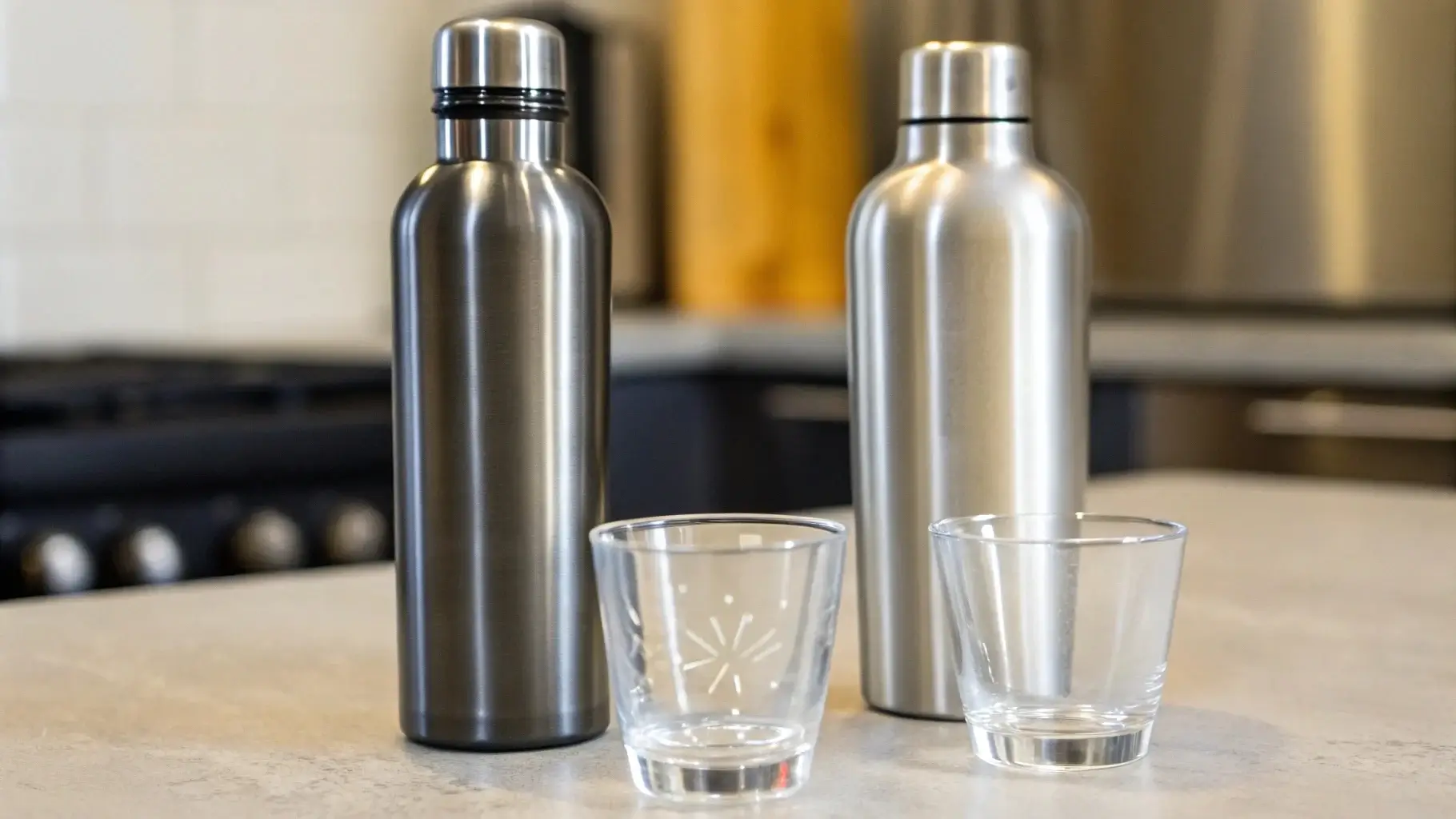
You want your water to taste like… water.
Stainless steel is flavor-neutral. It doesn’t react with liquids and never gives a metallic taste.
Taste and leaching concerns5 are more common with aluminum bottles, especially if the liner fails or degrades.
Which One Is Easier to Clean and Maintain?
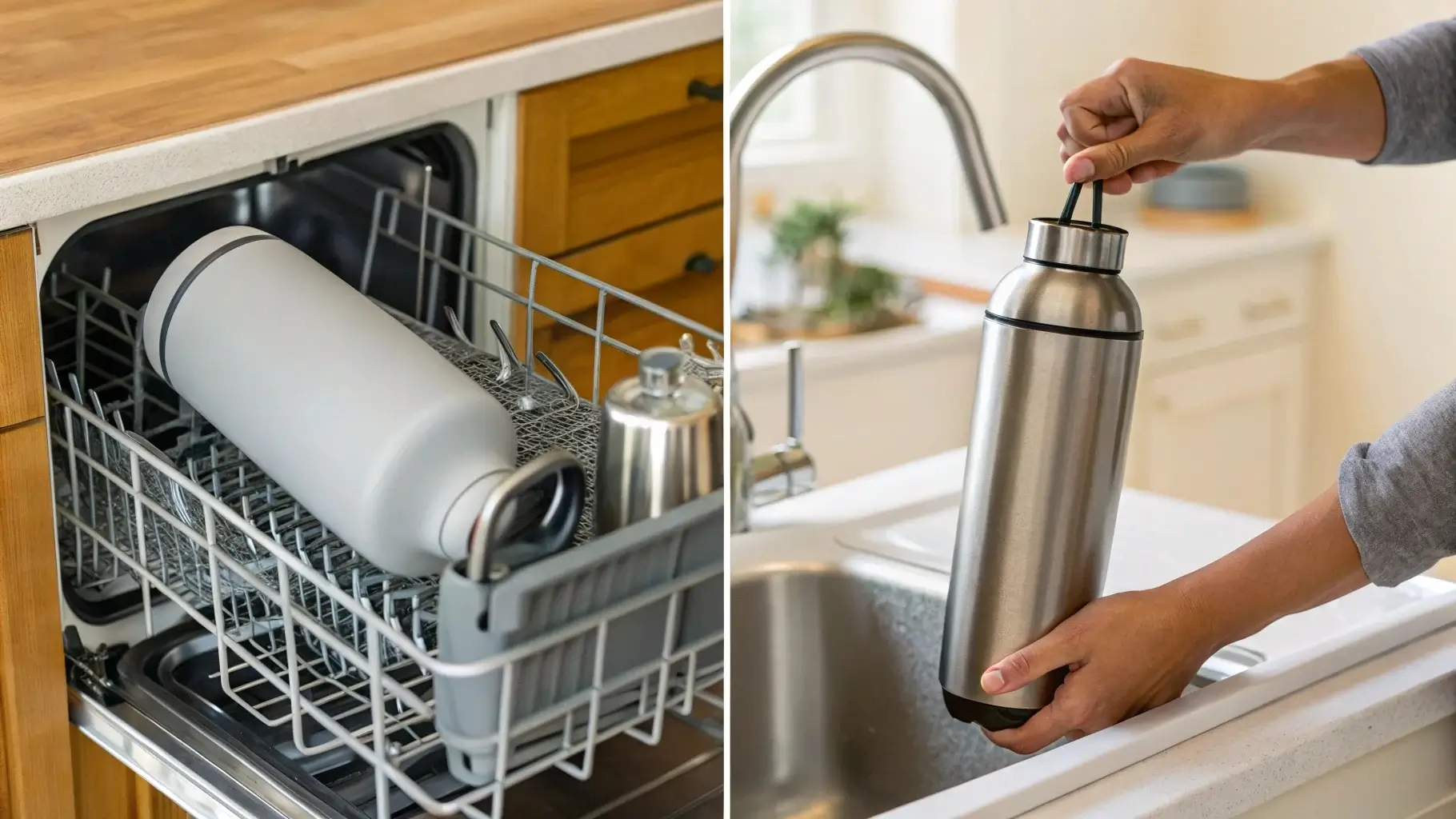
Daily use means daily cleaning.
Stainless steel bottles are often dishwasher safe, especially those without paint or rubber seals.
Aluminum bottles and dishwasher safety6 is a concern—heat and detergents can damage the lining and reduce safety.
What’s the Environmental Impact of Each Type?
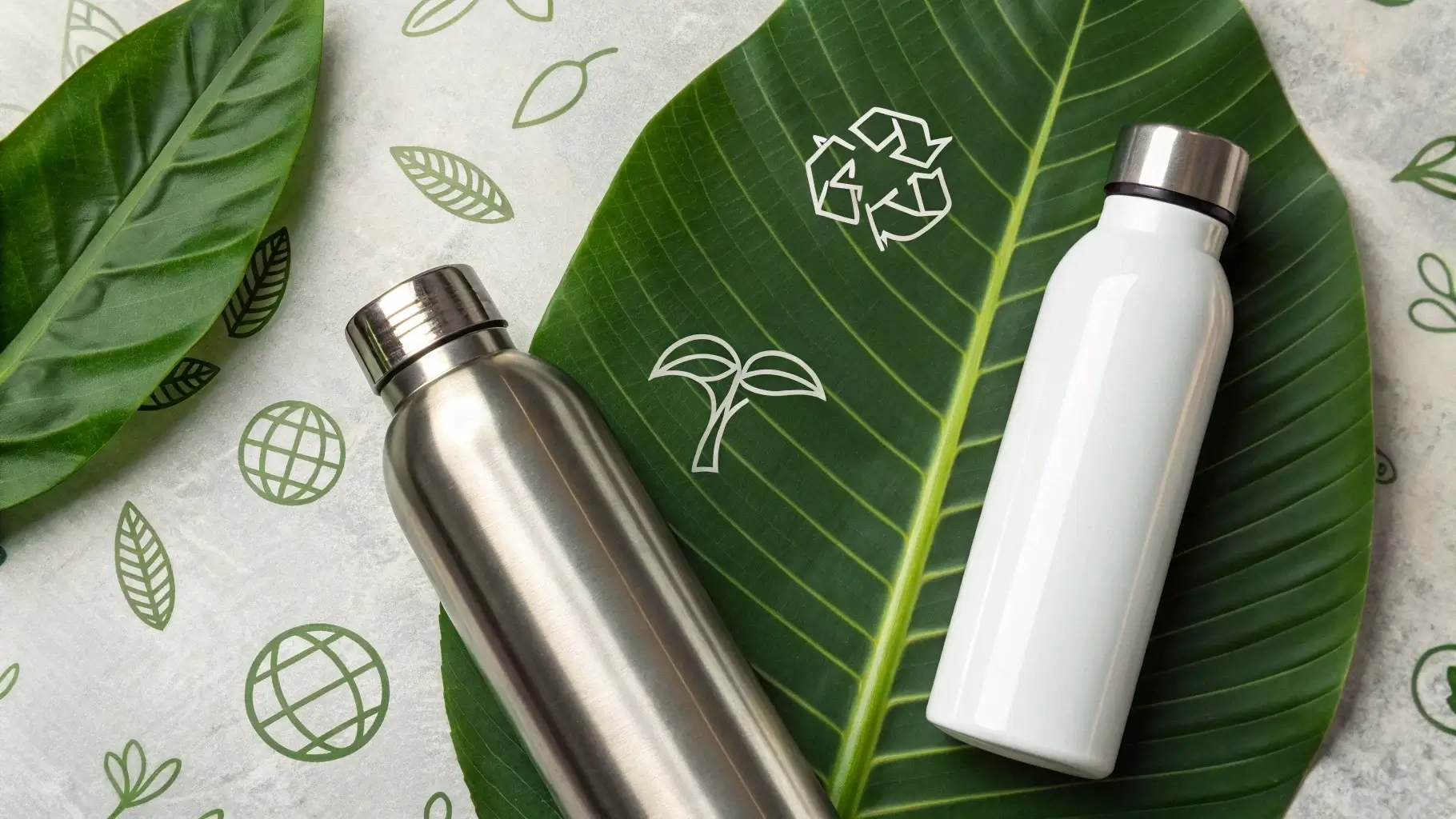
Both materials are recyclable, but not all sustainability is equal.
Stainless steel bottles last longer and don’t need replacement liners, reducing lifetime waste.
Aluminum production7 involves energy-intensive mining but has a lower shipping carbon footprint due to weight.
Which One Costs More in the Long Run?
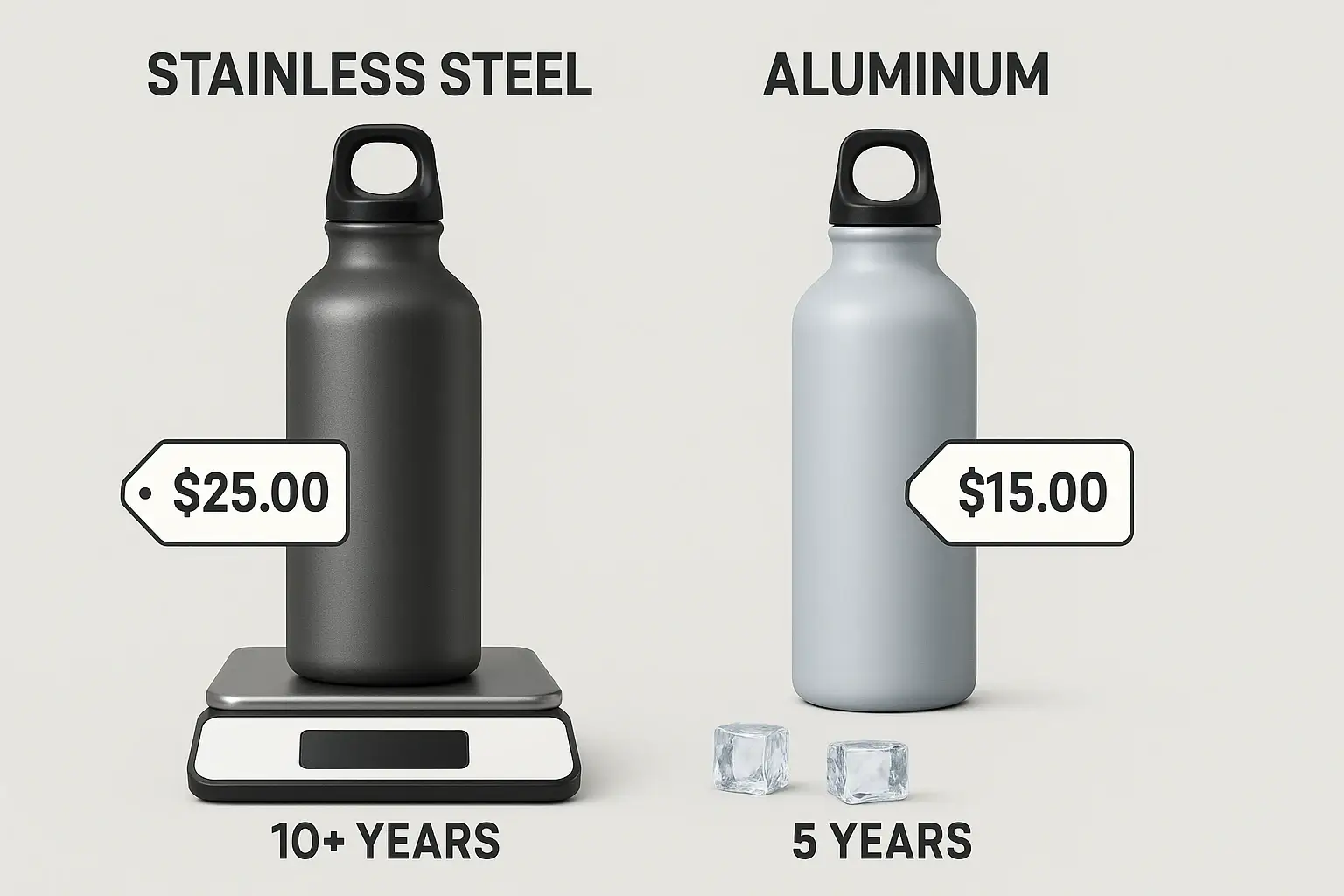
Budget matters—but so does long-term value.
Aluminum bottles are cheaper up front. Stainless steel bottles cost more, but they perform better and last longer.
Over time, lifetime value comparisons8 favor stainless steel for cost per use and reduced replacements.
Summary Table: Stainless Steel vs Aluminum Water Bottles
| Feature | Stainless Steel | Aluminum |
|---|---|---|
| Safety | Non-reactive, no lining | Needs lining, risk if damaged |
| Durability | Highly durable | Dents and scratches easily |
| Weight | Heavier | Lightweight |
| Insulation | Excellent (vacuum-insulated) | Poor |
| Taste | Neutral | May leach if lining fails |
| Dishwasher Safe | Usually, with care | No |
| Initial Cost | Higher | Lower |
| Lifespan | 5–10+ years | 1–2 years |
| Recyclability | Yes | Yes, but liner adds waste |
Frequently Asked Questions About Stainless Steel and Aluminum Bottles
Q1: Is stainless steel safer than aluminum for drinking water?
A1: Yes. Stainless steel doesn’t need a lining and won’t leach chemicals. Aluminum requires a liner, which can degrade over time.
Q2: Which bottle keeps water colder, stainless steel or aluminum?
A2: Stainless steel—especially insulated models—can keep water cold for up to 24 hours. Aluminum bottles warm quickly.
Q3: Are aluminum water bottles dishwasher safe?
A3: No. Dishwashers can damage the inner lining, reducing the safety and life of aluminum bottles.
Q4: Do aluminum bottles affect the taste of water?
A4: Yes, especially if the liner is worn. Stainless steel is taste-neutral and does not react with liquids.
Q5: Which is more durable: stainless steel or aluminum?
A5: Stainless steel. It withstands drops, pressure, and heat better, making it ideal for long-term daily use.
Conclusion
If you need a bottle that lasts, keeps your water safe and cold, and doesn’t alter taste, stainless steel is your best bet. Aluminum bottles are lightweight and budget-friendly, but they come with more limitations, especially in durability and long-term safety. For everyday hydration and better performance, stainless steel wins hands down.
-
See how aluminum bottles rely on internal liners for safe use ↩
-
Learn about types of linings used in aluminum bottles ↩
-
Compare the structural strength of aluminum vs stainless steel ↩
-
Understand why aluminum bottles lack thermal insulation ↩
-
Learn how damaged liners affect taste and leaching in aluminum bottles ↩
-
See why aluminum bottles aren't safe for dishwashers ↩
-
Review the environmental impact of aluminum production and use ↩
-
Explore cost-per-use comparisons between steel and aluminum bottles ↩

